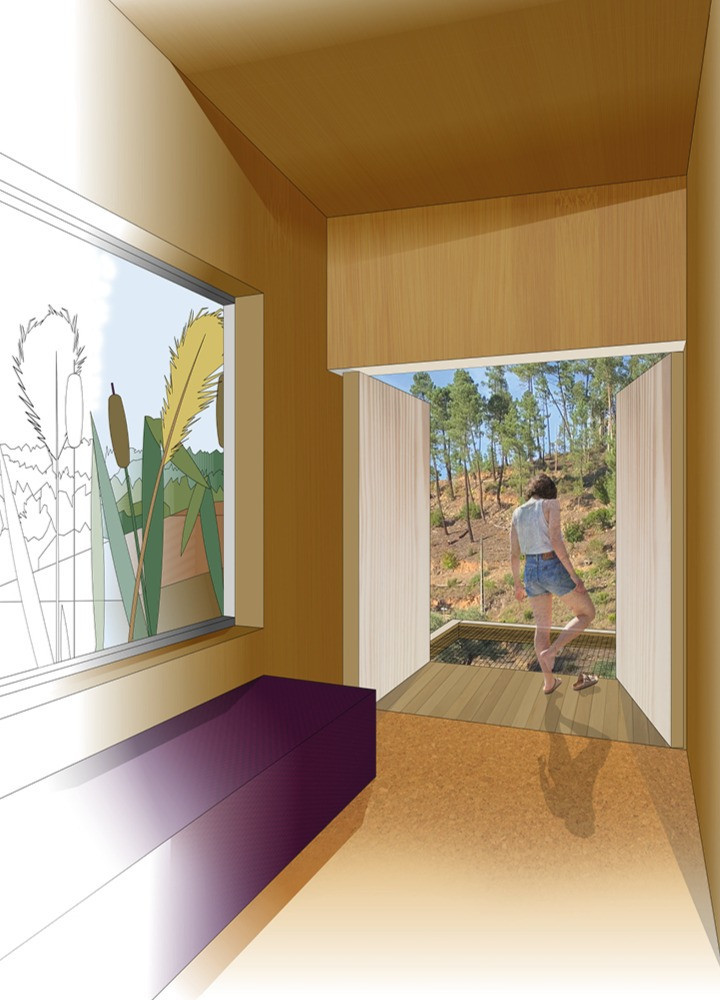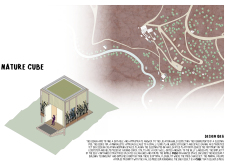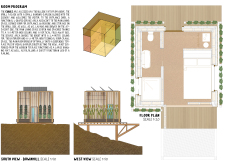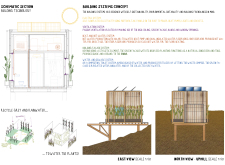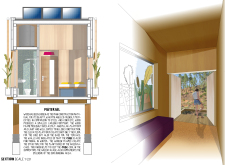5 key facts about this project
At its core, the Nature Cube represents a harmonious relationship between architecture and nature. By elevating the structure on stilts, the design minimizes its environmental impact, ensuring that the site remains undisturbed while offering impressive views and natural light. This elevation not only preserves the ground cover but also enables effective water drainage, reflecting a keen awareness of local ecological conditions. The use of large glass surfaces facilitates a transparent interaction between the interior and exterior, seamlessly connecting inhabitants with the outdoor landscape.
The main living area within the Nature Cube is intelligently configured, featuring a versatile design that allows for various room functions. A vertical fold-away bed promotes spatial efficiency, providing flexibility for the users while maintaining a clutter-free environment. The strategically oriented south-facing façade captures extensive sunlight during the day, creating warm and inviting interior spaces. This focus on natural light is complemented by a high ceiling, which contributes to an open atmosphere, further enhancing the users' experience within the pod.
The choice of materials is paramount in this project, with wood serving as the primary construction substance. This material aligns with the project's sustainability goals, as wood is known for its lower carbon footprint when compared to conventional building materials such as concrete or steel. Additionally, the incorporation of photovoltaic panels on the roof underscores a commitment to renewable energy, allowing the Nature Cube to generate its own electricity and thus reduce reliance on traditional energy sources.
Notably, the Nature Cube incorporates passive ventilation strategies, harnessing architectural principles that promote natural airflow. By combining operable windows with the high ceilings, the design provides an efficient climate control method, reducing the need for mechanical systems. The insulated walls enhance thermal performance, ensuring comfort year-round regardless of external weather conditions. Specific attention is given to water management as well, with systems in place that allow for the collection and reuse of rainwater, maximizing resource efficiency.
A distinctive feature of the Nature Cube is its green façade, which incorporates various plant species, contributing to both visual appeal and ecological benefits. These plants serve as natural insulation, helping to regulate temperature and humidity inside the structure while promoting biodiversity in the surrounding environment. The selection of plants and positioning of its ecological elements show a profound understanding of local flora, reinforcing the project’s commitment to blending architecture harmoniously with the landscape.
The Nature Cube also emphasizes flexibility in its design approach. The layout consciously allows for evolving uses, enabling the space to adapt to the needs of its occupants over time. Such adaptability is an essential characteristic of contemporary architecture, reflecting an understanding of shifting lifestyles and preferences.
In summary, the Nature Cube serves as a prime example of how thoughtful architectural design can prioritize sustainability while fostering a deep connection with nature. Through its minimalist yet functional design, precise material selection, and innovative energy systems, this project exemplifies responsible building practices that resonate with modern living. Readers interested in exploring the architectural plans, architectural sections, and various architectural designs of the Nature Cube are encouraged to delve into the project presentation for a comprehensive understanding of this architectural endeavor. Discover the unique architectural ideas behind this project and witness how effective design can enrich the experience of living harmoniously with one’s surroundings.


